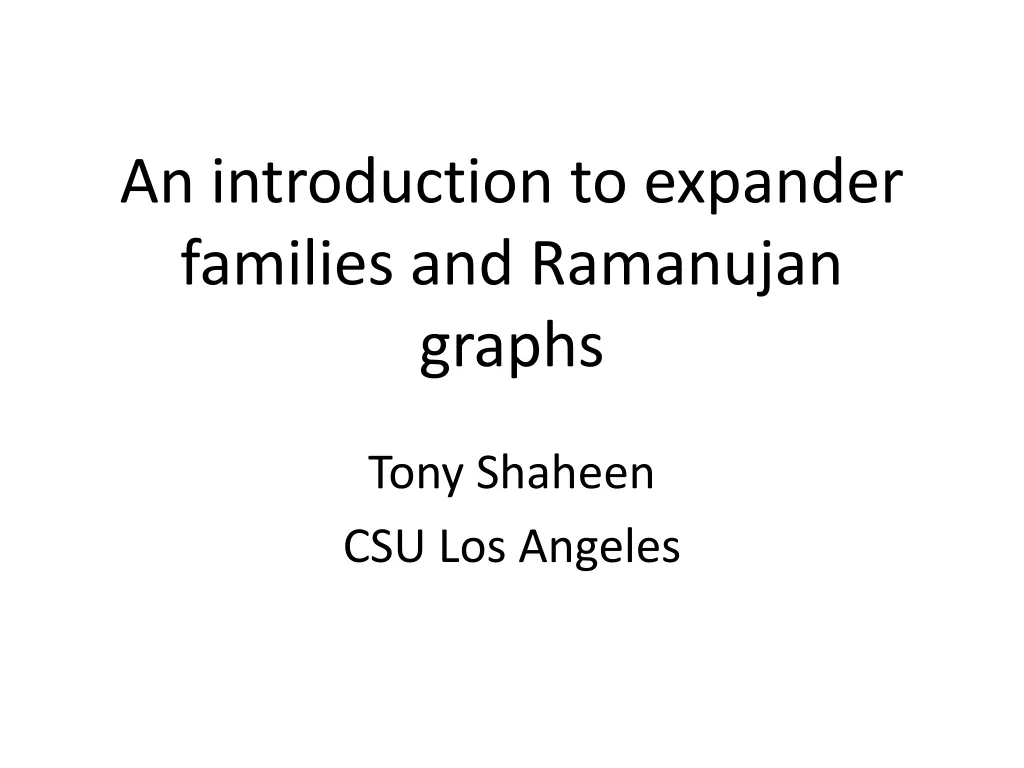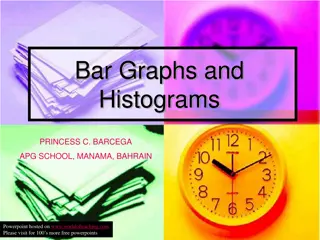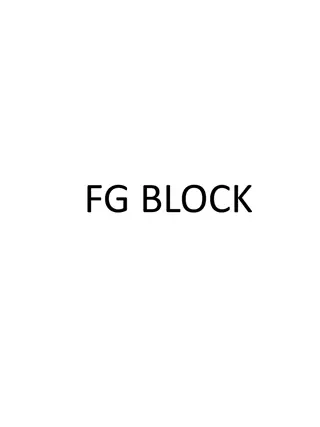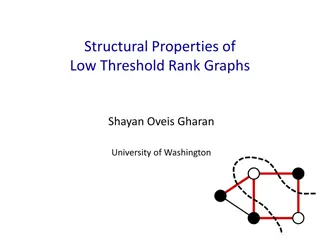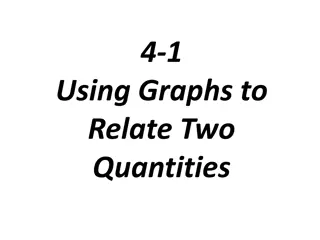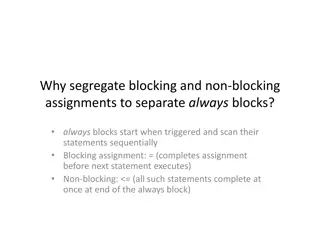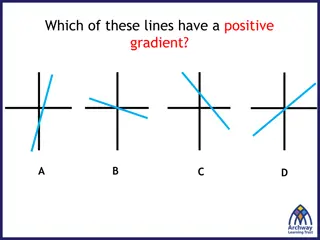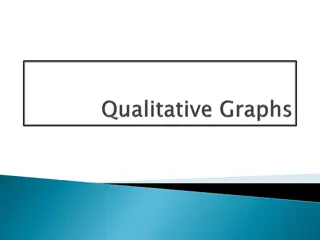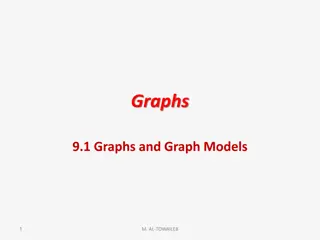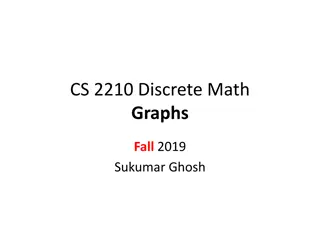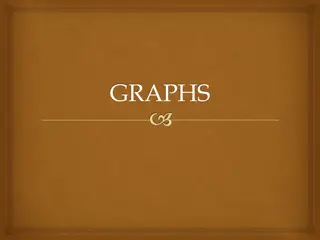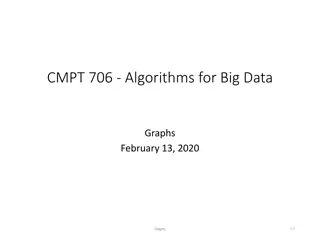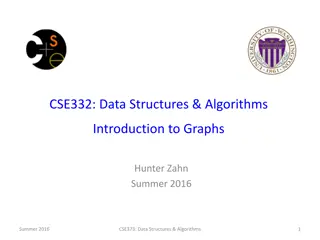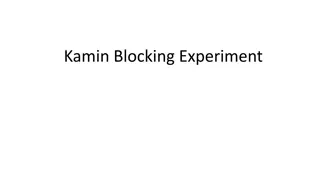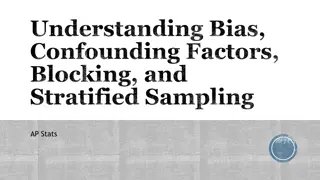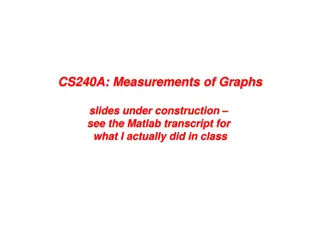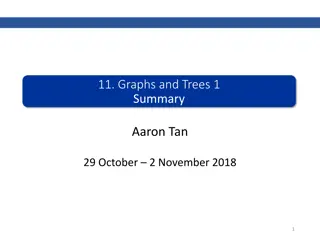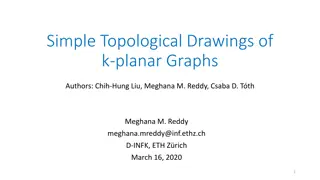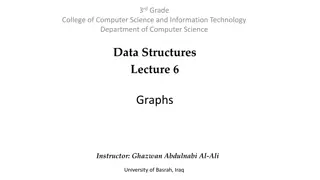Expander Families and Ramanujan Graphs
An introduction to expander families and Ramanujan graphs by Tony Shaheen from CSU Los Angeles. The discussion covers the concept of regular graphs, motivation behind expander families, communication networks, and the goal of creating an infinite sequence of d-regular graphs optimized for communicat
1 views • 54 slides
Product and Knowledge Graphs for Enhanced Information Retrieval
Dive into the world of product and knowledge graphs, uncovering the journey to a rich product graph, examples of knowledge graphs for songs, and the mission to provide comprehensive information on products and related knowledge. Discover use cases ranging from information provision to enhancing sear
3 views • 76 slides
Transforming Buildings with EDGE Certification
Discover how EDGE certification revolutionizes the way buildings are designed and constructed for a smarter, greener world. EDGE provides a comprehensive solution that makes building green faster, easier, and more affordable. Learn about the EDGE standard's focus on resource efficiency, materials, e
1 views • 17 slides
Exploring Various Types of Graphs in Statistics Education
Delve into the world of data visualization with slow reveal graphs, column graphs, pictographs, dot plots, divided bar graphs, sector graphs, line graphs, and stem-and-leaf plots. Engage in observations and wonderings to enhance statistical comprehension and analytical skills.
2 views • 8 slides
Graphs: An Introduction to Data Visualization
This chapter delves into various types of graphs used in data representation, such as bar graphs, pie graphs, histograms, line graphs, and linear graphs. It explains the purpose and structure of each graph type, along with practical examples. Additionally, it covers the Cartesian system for locating
1 views • 15 slides
Bar Graphs, Double Bar Graphs, and Histograms
Bar graphs are useful for displaying and comparing data, while double bar graphs help compare two related datasets. Histograms show the distribution of data. Learn how to interpret and create these visual representations effectively with examples provided.
0 views • 20 slides
Primal-Dual Algorithms for Node-Weighted Network Design in Planar Graphs
This research explores primal-dual algorithms for node-weighted network design in planar graphs, focusing on feedback vertex set problems, flavors and toppings of FVS, FVS in general graphs, and FVS in planar graphs. The study delves into NP-hard problems, approximation algorithms, and previous rela
2 views • 17 slides
Mastering Front Line Blocking Techniques in Football
Learn the strategies and techniques involved in front line blocking for field goal and PAT attempts in football. Understand the importance of FG/PAT blocking, inside and outside block schemes, and specific drills for developing these skills. Explore detailed instructions on single, look off, and rev
0 views • 18 slides
ANEFO Meeting on Player Conduct: Rules and Regulations Summary
Eugene Borgonzi presented key rules and regulations regarding player conduct at the ANEFO Meeting on September 30, 2019. The sections covered include rules on assisting runners, illegal use of hands and holding, illegal blocking, and illegal personal contact. The detailed guidelines prohibit actions
3 views • 16 slides
Bi-Decomposition of Large Boolean Functions Using Blocking Edge Graphs
Bi-decomposition is a vital technique in logic synthesis for restructuring Boolean networks. This paper discusses the methodology of breaking down large Boolean functions using Blocking Edge Graphs (BEG) to simplify physical design and reduce complexity. The process involves constructing BEG, perfor
1 views • 29 slides
Representation of Abstract Groups through Graphs
Explore the representation of abstract groups as automorphism groups of graphs, touching on topics such as the existence of graphs whose automorphism groups are isomorphic to given abstract groups, the cardinality of connected graphs satisfying specific properties, and questions regarding the cardin
0 views • 16 slides
Low Threshold Rank Graphs and Their Structural Properties
Explore the intriguing world of low threshold rank graphs and their structural properties, including spectral graph theory, Cheeger's inequality, and generalizations to higher eigenvalues. Learn about the concept of threshold rank, partitioning of graphs, diameter limits, and eigenvectors approximat
0 views • 22 slides
Exploring Types of Graphs for Data Representation
Different types of graphs, such as line graphs, scatter plots, histograms, box plots, bar graphs, and pie charts, offer diverse ways to represent data effectively. Understanding when to use each type based on the data being collected is essential for insightful analysis. Scatter plots are ideal for
3 views • 37 slides
Relationships Through Graphs
Learn how to analyze and relate two quantities using graphs, analyze data presented in tables and graphs, and sketch graphs representing various scenarios such as the movement of a model rocket or a playground swing. The visuals provided will help you understand how to interpret and draw graphs in d
4 views • 7 slides
Blocking and Non-blocking Assignments in Verilog
Explore the intricacies of segregating blocking and non-blocking assignments to separate always blocks in Verilog. Learn about the differences between blocking and non-blocking assignments, their implications on sequential execution, and how to use them effectively in hardware description language p
1 views • 9 slides
Correlation in Scatter Graphs
In this content, various graphs are used to demonstrate the concept of correlation in scatter graphs. It discusses positive, negative, and no correlation, showcasing how one variable affects the other. Examples and explanations are provided to help understand the relationships between different sets
0 views • 17 slides
Symmetric Chromatic Function for Voltage Graphs
Exploring the concept of a Symmetric Chromatic Function (SCF) for voltage graphs involves proper coloring conditions for edges and vertices, edge polarization functions, and decomposing voltage graphs into disconnected and connected squiggly graphs. The SCF allows for determining the number of ways
0 views • 7 slides
Uniquely Bipancyclic Graphs by Zach Walsh
Research conducted at the University of West Georgia focused on uniquely bipancyclic graphs, defined as bipartite graphs with exactly one cycle of specific lengths determined by the order. Uniquely bipancyclic graphs have special properties, including having a Hamiltonian cycle and a specific order
2 views • 18 slides
Graphs for Mathematical Interpretation
Explore how students can grasp information through graphical formats and convert it into mathematical graphs. Learn about qualitative graphs, functions, axes, and more. Delve into exercises matching graphs with situations and drawing graphs for given scenarios like plane take-off, biking, and snowbo
0 views • 16 slides
Adjacency Labeling Schemes and Induced-Universal Graphs
Adjacency labeling schemes involve assigning L-bit labels to vertices in a graph for efficient edge determination. The concept of induced-universal graphs is explored, where a graph is universal for a family F if all graphs in F are subgraphs of it. Theorems and lower bounds related to adjacency lab
0 views • 24 slides
Graphs and Their Models
Explore the world of graphs through definitions, types, and special features. Learn about vertices, edges, simple and multiple graphs, directed and undirected graphs, and more. Discover the terminology and special types of graphs along with basic concepts and properties.
0 views • 33 slides
Introduction to Graph Theory: Exploring Graphs and Their Properties
This content delves into the realm of graph theory, focusing on the fundamental concepts and applications of graphs. It covers topics such as the Seven Bridges of Königsberg problem, types of graphs, vertex degrees, degree sequences, handshaking theorem, and more. Through visual aids and explanatio
0 views • 71 slides
Lock-Free and Wait-Free Algorithms in Concurrent Data Structures
Illustration of lock-free and wait-free algorithms compared to blocking algorithms, with insights on concurrent object execution, blocking vs. non-blocking algorithms, definitions, comparisons between locks, lock-free, and wait-free approaches, and explanations on making algorithms wait-free. Exampl
1 views • 23 slides
Directed Graphs and Adjacency Matrices in Discrete Structures
Explore the concepts of binary relations, directed graphs, adjacency matrices, transitive closure, and walks in the context of discrete structures. Learn how vertices, edges, in-degrees, out-degrees, and self-loops are defined in directed graphs. Understand the importance of adjacency matrices in re
2 views • 28 slides
Graphs in Mathematics and Computer Science
Graphs in mathematics and computer science are abstract data types used to represent relationships between objects. They consist of vertices connected by edges, which can be directed or undirected. Graphs find applications in various fields like electric circuits, networks, and transportation system
0 views • 19 slides
Blocking in Experimental Design
Blocking in experimental design is a crucial technique used to control sources of variation in experiments. This method helps to manage nuisance parameters and ensure accurate and reliable results. Learn about the importance of blocking, examples of when it is used, and its implications for inferenc
0 views • 12 slides
Graph Theory in Mathematics Curriculum
Integrate graphs and networks into math curriculum to engage students with practical applications. Explore simple graphs, directed graphs, bipartite graphs, matching problems, and planar graphs across different year levels. Enhance understanding of concepts like complete graphs, vertices, edges, and
0 views • 43 slides
Graphs and Trees: Understanding Relationships in Graph Theory
In the world of graph theory, graphs and trees play a significant role in describing relationships among items in a collection. Graphs consist of vertices representing intersections or stations, connected by edges like roadways or friendships. Trees, on the other hand, are minimally connected graphs
0 views • 30 slides
Introduction to Graphs and Algorithms in Data Structures
This text delves into the fundamentals of graphs and algorithms within data structures, emphasizing their role in representing relationships among items. It covers key concepts such as vertices, edges, directed and undirected graphs, standard operations, and the use of graphs to solve diverse proble
0 views • 36 slides
Understanding Graph Theory: Vertices, Edges, and Planar Graphs
Explore the world of graphs in graph theory, including concepts like vertices, edges, planar graphs, and Euler's theorem. Learn about dual graphs, planarity testing, and the smallest not-planar graphs K5 and K3,3. Dive into the fascinating realm of graph drawing and visualization.
0 views • 32 slides
Understanding Classical Conditioning and Blocking Effects
Explore the concepts of classical conditioning, blocking effects, and suppression ratios in psychological experiments. Discover why blocking occurs, the role of surprises in conditioning, and the process of predicting upcoming events through conditioning. Unravel the Kamin Experiment and grasp the s
1 views • 5 slides
Understanding Bias, Confounding Factors, Blocking, and Stratified Sampling in AP Statistics
Explore the concepts of bias, confounding factors, blocking, and stratified sampling in AP Statistics. Understand how bias can skew results, the impact of confounding factors on relationships, and methods to control for confounders. Learn how blocking ensures fair comparisons in experiments and how
0 views • 9 slides
Wave Analysis of L-Beam Structure with Blocking Mass
Explore the wave analysis of an L-beam structure with a blocking mass, including the methodology, objectives, and results obtained on natural frequencies. This study dives into wave transformation matrices, boundary reflection, joint transmission, and the impact of blocking mass parameters on the st
0 views • 16 slides
Graph Measurements and Classifications: A Detailed Overview
Explore the world of graph measurements and classifications in this comprehensive content ranging from planar graphs to overlap graphs, power-law graphs, and small-world graphs. Discover various generators for classes of graphs and observe graphs in the wild. Learn about diverse graph statistics and
0 views • 8 slides
Explore Innovative Edge of Things Project Proposal by Erkki Harjula
Dive into the project proposal for Intelligent Edge of Things (I-EoT) by Erkki Harjula from University of Oulu, focusing on AI and machine learning in decentralized Edge IoT architecture. Discover how this initiative aims to enhance resource utilization, cost-efficiency, QoE, and security in the Edg
0 views • 9 slides
Understanding Graphs and Trees: Definitions, Properties, and Representations
Explore the fundamental concepts of graphs, including vertices, edges, directed and simple graphs, complete graphs, subgraphs, Euler circuits, and more. Dive into matrix representations, planar graphs, and graph isomorphism for a comprehensive overview.
0 views • 16 slides
Simple Topological Drawings of k-Planar Graphs and Planarization Approaches
Explore the concepts of simple topological drawings in k-planar graphs, planarity, crossing numbers, and planarization approaches. Learn about the maximum crossings per edge, local crossing numbers, and the relationship between total crossings and minimizing maximum crossings. Discover insights on 4
0 views • 9 slides
Understanding Non-Blocking I/O in Operating Systems
Explore the concept of non-blocking I/O in Operating Systems through discussions on MPI types, non-blocking I/O examples, and comparisons with blocking I/O. Learn about MPI non-blocking I/O functions such as MPI_Irecv, MPI_Isend, MPI_Wait, and more.
0 views • 10 slides
Design and Analysis of Engineering Experiments with Blocking Factors
Explore the concept of blocking factors in engineering experiments, including the use of randomized complete block design, nuisance factors, and the importance of blocking to minimize variability. Learn how blocking techniques can help manage uncontrollable factors and improve experimental outcomes.
0 views • 27 slides
Exploring Graphs in Computer Science: Data Structures and Applications
Delve into the world of graphs in computer science through this comprehensive guide from the University of Basrah. Learn about the fundamentals of graphs, their representations, connectivity, and examples, all taught by Instructor Ghazwan Abdulnabi Al-Ali. Gain insights into adjacency, paths, connec
0 views • 14 slides
